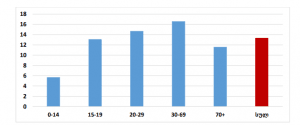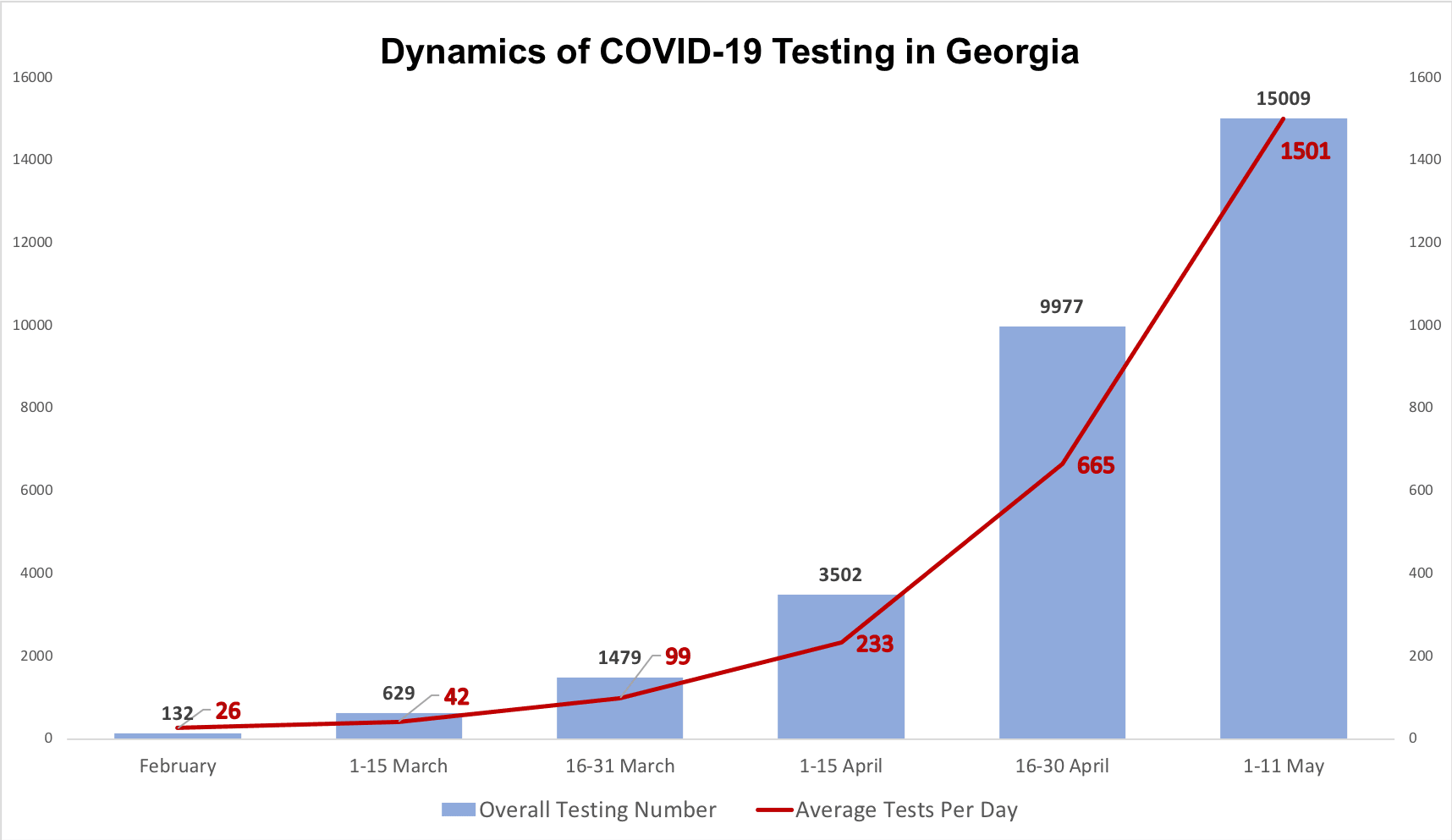
NCDC Releases Key Figures on COVID-19 Outbreak in Georgia
The National Center for Disease Control and Public Health of Georgia (NCDC) has published a long-awaited, data-rich analysis of COVID-19 spread in Georgia.
As the country emerges from the thick of the pandemic, NCDC’s report tracks the progress – and the decline – of coronavirus, shedding new light on the size and scope of the outbreak.
Civil.ge offers a quick summary of insights, and highlights most important revelations from the report.
COVID-19 patient profile
Georgia’s chief public health authority provided a breakdown of data collected from 500 patients treated for a disease caused by the novel coronavirus.
Roughly equal numbers of men and women – 243 and 257, respectively – were infected by the virus.
Average age of patients – as well as median age – stood at 42. Most recorded cases – 64 % out of 500 patients – fall into 30-69 age category.
Average length of stay in a hospital – period from the day of admission to the day of discharge – amounted 20.7 days.
According to the report, most common COVID-19 symptoms experienced by Georgian patients are fever, asthenia, cough, sore throat, and headache.
In the meantime, out of 500 coronavirus-positive patients, around 16.6 % were asymptomatic.
Most frequent underlying conditions were high blood pressure (hypertension), diabetes and kidney disease.
How contagious is the virus?
As of May 11, rate of cumulative incidence – measuring disease frequency during a given period of time in the population – hovered around 16.9 infected persons per 100,000 people.

Effective reproduction number, another key benchmark wielded by epidemiologists, equaled 3,88 after two weeks since the occurrence of first COVID-19 case in Georgia, and – remarkably – it dipped to 0.47 at the end of the reporting period.
To put it simply, a single infected individual is now likely to transmit COVID-19 to less than one person on average, hence the spread of the virus is certainly on the decline.
- NCDC: Rate of COVID-19 Transmission Decreased in Georgia
- How Prepared is Georgian Healthcare System for COVID-19 Pandemic?
Mortality attributed to coronavirus is tiny in numbers – 10 deaths recorded (up to May 11), case fatality rate sitting at 1.7 %.
It comes as no surprise that COVID-19 had no bearing on excess mortality rate in Georgia (12,474 deaths in the first three months of 2020, a 4 % decrease compared to the same period in 2019).
Taking stock of COVID-19 testing
From January 30 to May 11, 32,283 PCR tests have been carried out in public health, clinical and commercial laboratories to diagnose COVID-19 infection – a bulk of them (43%, in absolute numbers 13,944) performed by NCDC’s Lugar lab.
NCDC maintains that all cases were confirmed or double-checked (for positive results after rapid testing) using PCR methodology – touted by NCDC Head Amiran Gamkrelidze for its sensitivity and specificity in terms of virus detection.
As the graph attests, Georgia has significantly ramped up testing starting from mid-April, topping 1,500 tests performed daily in early May.

Notably, despite testing on a larger scale, test-positivity rate – showing the ratio between who got tested for the virus and who tested positive for it – plunged from 9.5 % in late March to 0.3 % in early May. The average rate is in the region of 2 % for the given period.
NCDC estimated that 13 % of patients with confirmed COVID-19 infection were healthcare personnel.
As stated in the report, NCDC’s epidemiologists have traced 3,500 close contacts of infected patients, who have been placed under quarantine or self-isolated.
In total, more than 20,000 people – close contacts and travelers returning from coronavirus-affected international locations – have spent a fortnight in quarantine zones.
For daily updates on COVID-19 spread in Georgia, check out our live blog:
This post is also available in: ქართული Русский